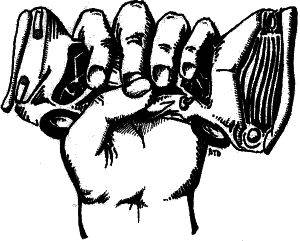 Car free in Connecticut: What am I thinking? It has been two months since I moved back to central Connecticut from Champaign-Urbana, Illinois and the transportation norms of Connecticut are radically different from what I’d become accustomed. In CU I had shed the personal automobile and relished the biking, walking, and public transit options for getting around the compact and culturally dense community.
Car free in Connecticut: What am I thinking? It has been two months since I moved back to central Connecticut from Champaign-Urbana, Illinois and the transportation norms of Connecticut are radically different from what I’d become accustomed. In CU I had shed the personal automobile and relished the biking, walking, and public transit options for getting around the compact and culturally dense community.
Addicted to the low costs and enjoyable non-vehicular commutes I decided to continue my car free adventure in central Connecticut. As the car free lifestyle is decidedly rare in this area I thought it might be a good idea to capture my thoughts and experiences in a series of short articles. Folks considering the car free or car light lifestyles could read these accounts and be inspired to take the next step. Existing converts would have the opportunity to share their tips and tricks (and shortcuts) to make the car free life more palatable.
First I’ll share where I’m coming from. For the last three years I was living in an idyllic university community. The cities of Champaign and Urbana sandwich the University of Illinois. Wide, flat streets connected in a convenient grid pattern contain three vibrant business districts and the university within a three mile circumscribed circle. The city of Urbana boasts an 8% mode share for bicycling trips. Although bike lanes aren’t universal, a trip across town is comfortably completed on low traffic, neighborhood streets.
C-U had the most cycling friendly motorists I have encountered, as they were familiar with sharing the road and many were themselves at least occasional bicycle commuters. A constant supply of vehicle free university students, most entirely clueless of safe cycling practices, augmented the permanent resident bicycle commuters. The town council of Urbana was marjority pro-bicycle and was moving swiftly to implement a comprehensive bicycle plan. Neighboring Champaign was also adding bicycle lanes to major downtown thoroughfares and had included Complete Streets wording in its transportation policy. In 2010 Urbana was recognized as a Bronze Bicycle Friendly Community by the League of American Bicyclists and was quickly progressing towards the next level of Silver.
I lived in central Connecticut from 2001 to 2007, but after frolicing for years in a bikable and walkable mecca the differences are stark. The mode share for bicycle trips in the Hartford area is less than 1%, which is near the national average. The City of Hartford has adopted a policy of incorporating bike lanes where possible, but the surrounding suburban communities have scant bicycle friendly infrastructure. The dominant suburban and exurban makeup of the area results in a less compact metropolitan core and longer distances between home, work, shopping, and cultural events. The geographically constrained arterial roads results in higher traffic volume on critical links that sometimes can’t be planned around by a cyclist looking for a more lightly traveled alternative. On top of the physical challenges of minimal infrastructure and longer distances, the drivers in central CT are not familiar with operating around bicycles that share the roadway. It’s stressful riding out there, but you already know that.
Now why would I choose to attempt to ditch my car in this type of environment? Good question. My primary reason is that I’d rather put away an extra $6,000 a year towards an early retirement. Secondarily, I find that bike commuting reduces my stress level and keeps me fit with a minimal level of time and effort. The trip to and from work each day becomes time to think and get my blood moving. The gym memberships are avoided while at the same time I daily experience the outdoors and counteract the soul destroying effects of an engineering desk job. There are numerous additional benefits of the car free lifestyle that I will explore in future articles, but that’s enough for now.
How does one get started on this car free stuff? When I moved back to Connecticut I realized that in order to make car free work, it would take a little planning. My job in East Hartford at Pratt & Whitney would account for most of my transportation needs, so I decided to live a couple of miles from the office. A bucolic estate out in Hebron was out of the question. Groceries, shopping, restaurants, and outdoor pursuits are within easy cycling distance. Cultural events in downtown Hartford are still an easy ride. The framework is there for a successful car free experiment. Now it’s up to me to see if I can make it work. Future articles will look at how I’m doing and occasionally take up larger urban planning and sustainability themes. Hopefully you’ll find these periodic articles entertaining, educational, and in some ways inspiring. Wish me luck!








